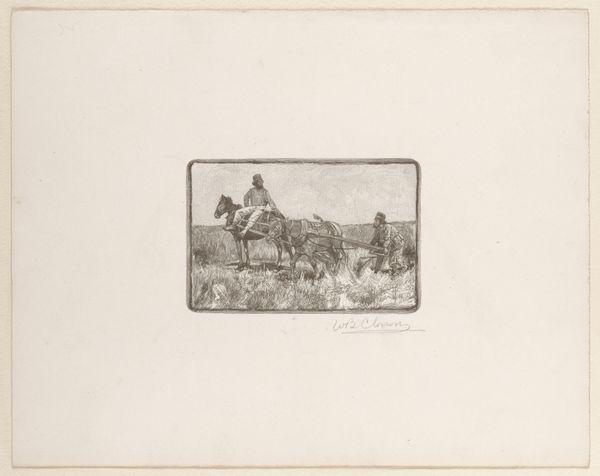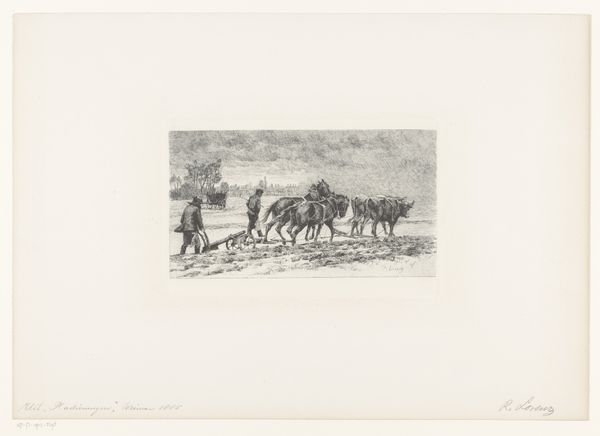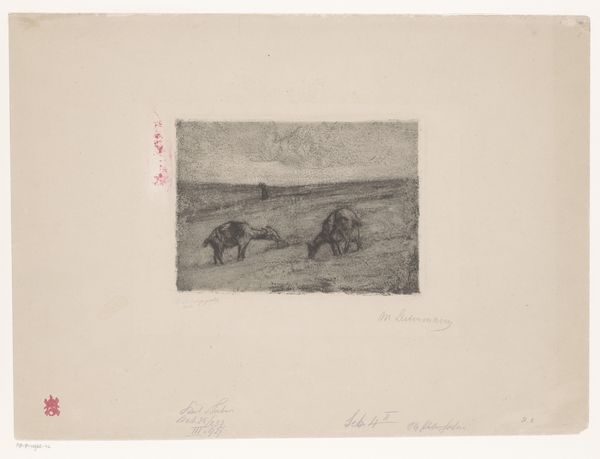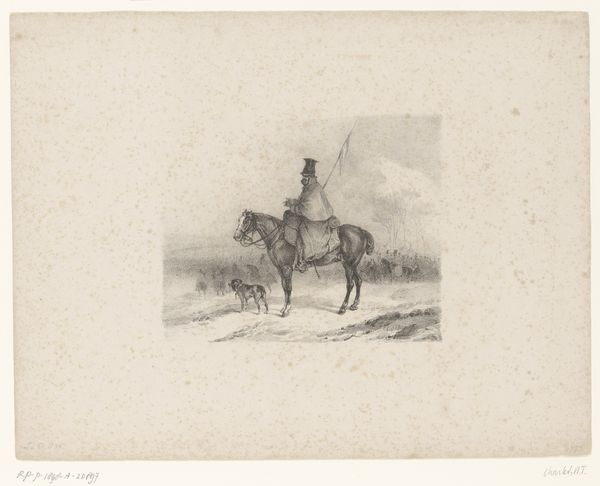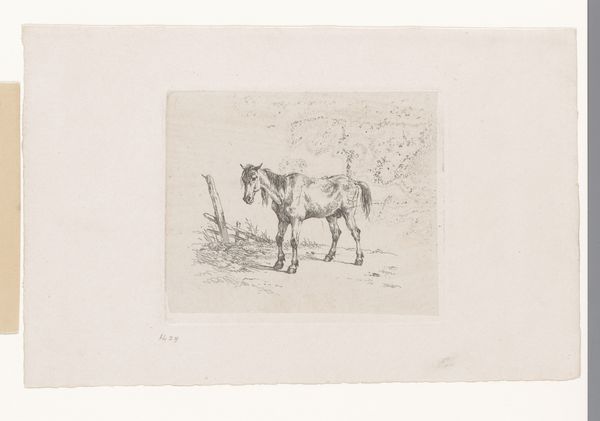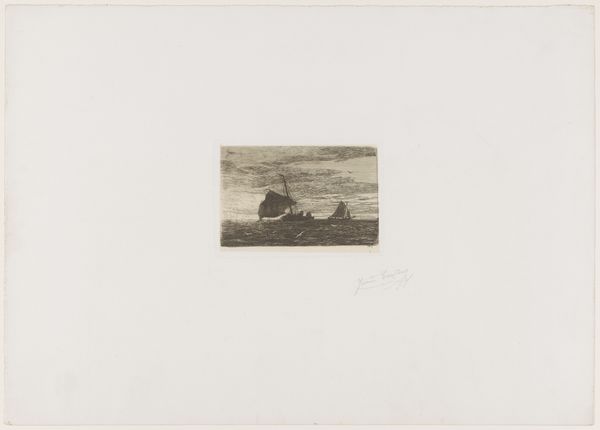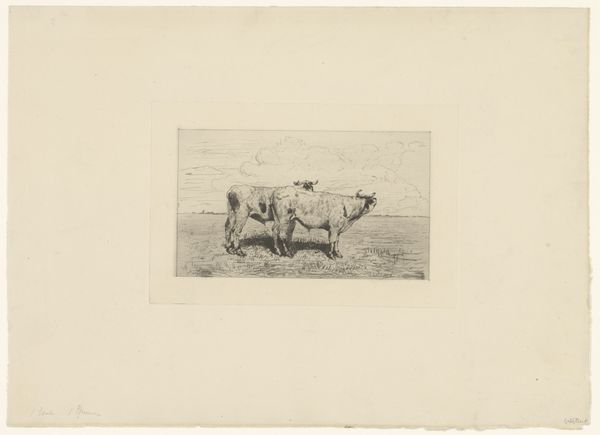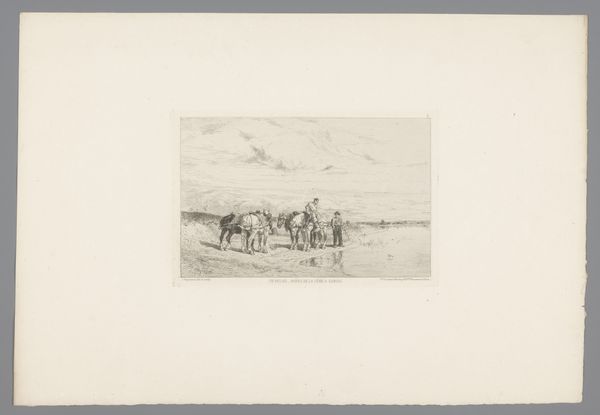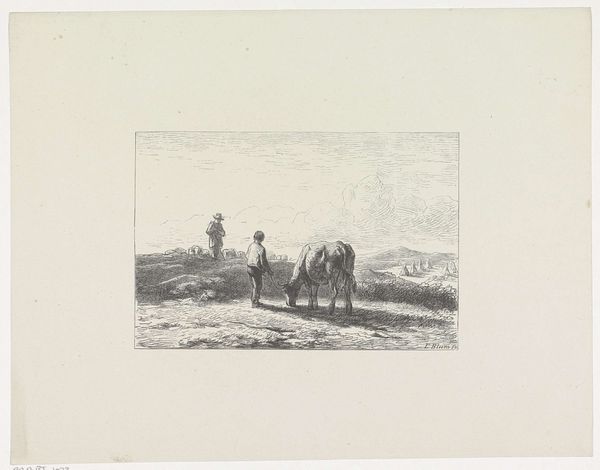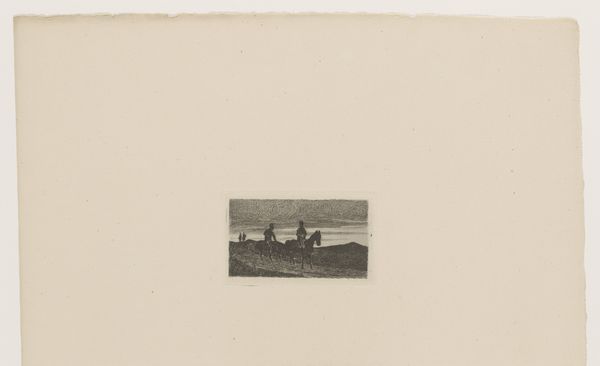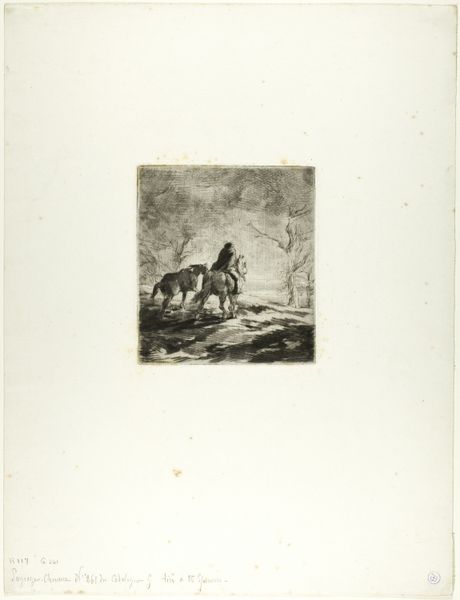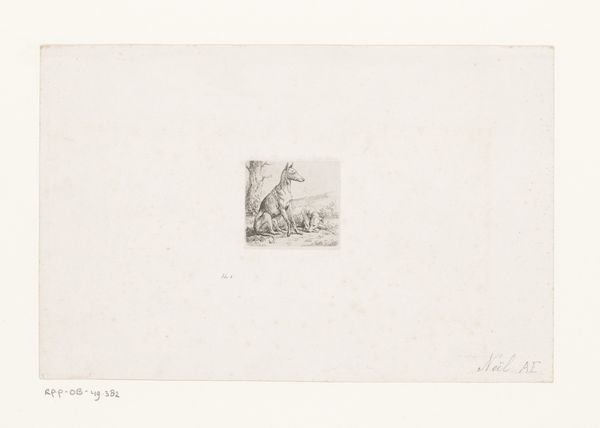
Dimensions: height 84 mm, width 109 mm
Copyright: Rijks Museum: Open Domain
This small etching of a landscape with two horses, one carrying a rider, was made by Jules-Jacques Veyrassat, a 19th-century French artist. It’s a print, made by incising an image into a metal plate, inking the surface, and then running it through a press. Look closely, and you can see how the artist uses the etched lines to capture the texture and weight of the horses and the surrounding landscape. The material itself – metal – allowed Veyrassat to create these fine, detailed lines, conveying a sense of realism and depth, which was in contrast to the mechanization of the Industrial Revolution. Veyrassat's choice of etching as a medium is significant. Printmaking was becoming increasingly popular and accessible, with artists using it to respond to a rapidly changing world marked by industrial advancements and the changing roles of labor. This etching, with its rural subject matter and traditional technique, speaks to a nostalgic longing for a pre-industrial past, even as it embraces a technology that allowed for wider distribution and consumption of art. Considering these historical factors allows us to understand the deeper meaning of the artwork, blurring the lines between high art and craft.
Comments
No comments
Be the first to comment and join the conversation on the ultimate creative platform.
